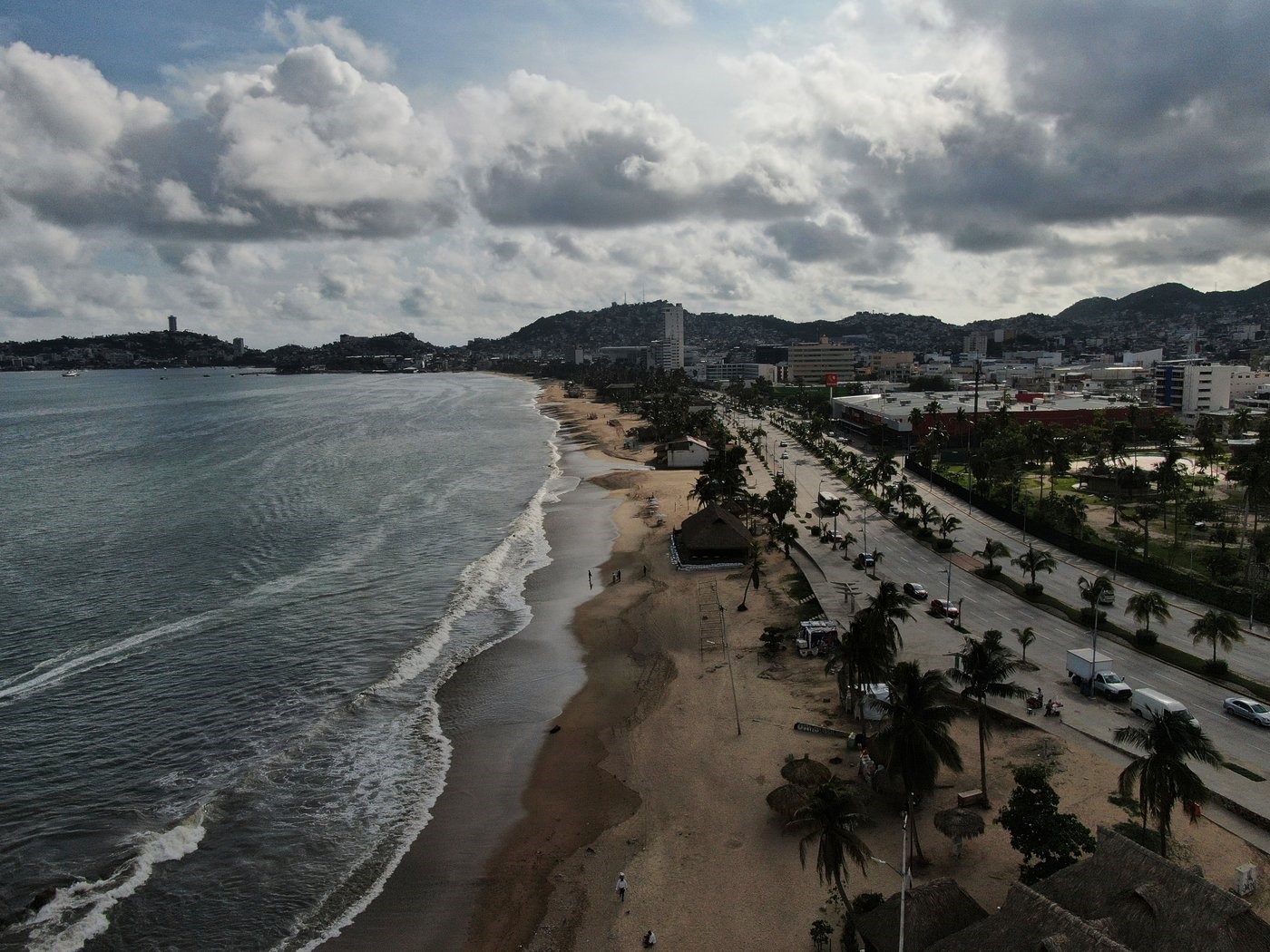
Tourists stroll along the beach shore before the arrival of Hurricane Erick, in Acapulco, Mexico, Wednesday, June 18, 2025. (AP Photo/Fernando Llano)
Republished June 18, 2025 - 4:57 PM
Original Publication Date June 18, 2025 - 1:16 PM
WASHINGTON (AP) — Having doubled in strength in less than a day and still expected to grow further, Hurricane Erick on Wednesday chugged through the ideal environment to power up quickly as it approached Mexico's southern Pacific Coast.
This type of rapid intensification has become more common in a warmer climate, especially in the Atlantic and near the United States, which is not where Erick is now, scientists said. Last year, there were 34 incidents of rapid intensification — when a storm gains at least 35 mph in 24 hours — which is about twice as many as average and causes problems with forecasting, according to the National Hurricane Center.
Erick, an otherwise run-of-the-mill hurricane that’s strong but not unusual, gained 50 mph in just 18 hours and was still powering up as it neared the coast.
The only thing that’s unusual so far is that this is the fifth eastern Pacific storm a month into the season there, which is a little more active than normal, said University of Miami hurricane researcher Brian McNoldy. And it’s likely that when Erick hits, it will be the strongest storm to make landfall in that part of Mexico this early in the season, he said.
On average, the fifth named storm first appears in the Eastern Pacific basin around July 23, according to the hurricane center. The Eastern Pacific hurricane season, which starts May 15 and runs through Nov. 30, averages 15 named storms, eight of which become hurricanes with four of those reaching major status of winds more than 110 mph (177 kph). In general, the eastern Pacific tends to have about one storm a year more than the Atlantic. But Atlantic storms tend to cause more destruction because they hit more populated areas.
Because of where Erik is headed — nearing Acapulco — and its rapid intensification, the storm brings back bad memories of deadly Otis, which seemed to come from out of nowhere to smack Mexico with a top-of-the-scale Category 5 hurricane in 2023. But Erick is no Otis, especially because of their timing. Erick is an early-season storm and Otis hit in October.
Forming in October, Otis grew stronger by churning up deeper and warmer water because it was later in the year. Erick is early in the year and the deep water it would churn up is cooler and doesn't fuel rapid intensification. Even so, the surface water is plenty hot enough, said MIT hurricane scientist Kerry Emanuel.
All the ingredients are otherwise perfect for Erick's power-up, said University at Albany atmospheric scientist Kristen Corbosiero. Dry air often stops rapid intensification, but Erick hasn't run into dry air and the atmosphere around it is extremely moist, she said. It's got a good stormy eye forming and has what would be the ideal shape of a strengthening storm, she said.
Studies have linked human-caused climate change in general to more bouts of rapid intensification, as well as wetter and slower storms, Corbosiero said. But it would take more study, usually after the storm hits, to find any potential link between global warming and Erick in particular, if there is one, she said.
___
The Associated Press’ climate and environmental coverage receives financial support from multiple private foundations. AP is solely responsible for all content. Find AP’s standards for working with philanthropies, a list of supporters and funded coverage areas at AP.org.
News from © The Associated Press, 2025